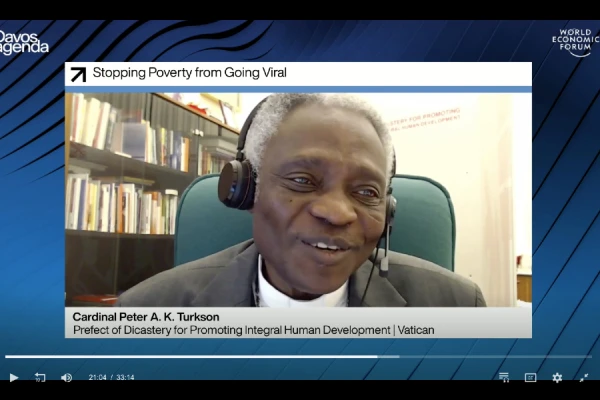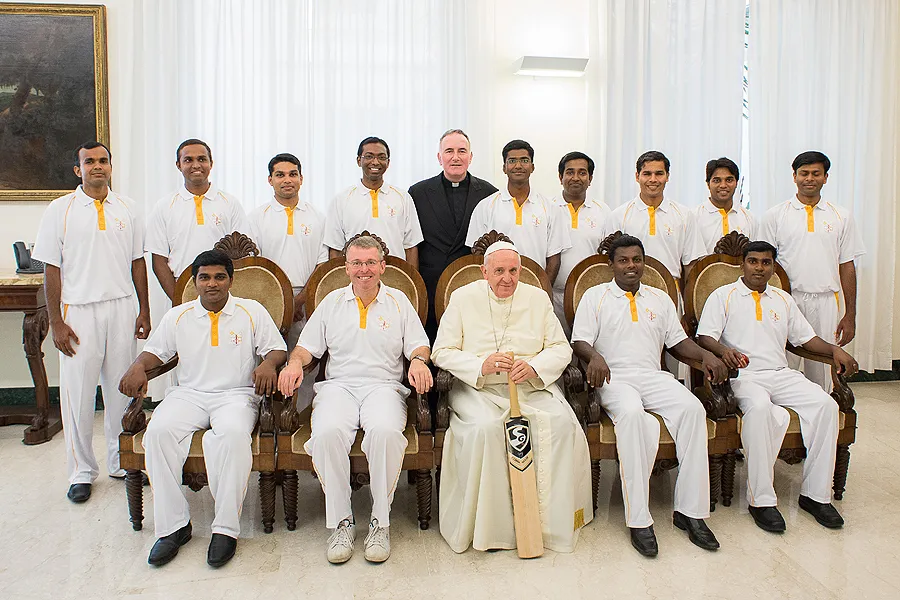
Rome, Italy, Sep 26, 2017 / 12:24 am (CNA).- After a long struggle with alcoholism and homelessness, Melanie Medina has turned her life around. She said that a recent pilgrimage to Rome has proven that change is possible, and that “good things can happen.”
Medina spoke to CNA at the end of a six-day visit to Rome. She is the fourth person selected to go on pilgrimage to Rome through Denver Homeless Ministries (DHM).
“It’s all just a blessing, everything’s been turning totally different than the way it was before, everything,” Medina said.
DHM is an organization working to provide opportunities to serve the homeless as both “equals and friends.” DHM offers the pilgrimage as a way to encourage those who have made steps to change their lives.
This year’s pilgrimage lasted from Sept. 9-14 and consisted of Medina, trip organizer Tanya Cangelosi, and chaperone Christine Logan.
The pilgrimage was organized with the help of the Catholic Travel Center (CTC), who payed for their hotel, limo transportation service to the airport, and Medina’s birthday dinner while in Rome. The CTC also took care of their flights after a delay left them stranded at the airport.
Until last year, Medina, 38, had been living on the streets and was struggling with alcoholism. She grew up in an alcoholic family, and from a young age she was often responsible for taking care of her parents and cleaning them up at night.
Medina left home at the age of 15, and went to stay with her older sister, who was also an alcoholic. She started hanging out with gangs and eventually entered an abusive relationship. She left the man after having two children with him by the age of 19.
After entering another long-term relationship and having her third child, Medina began to drink heavily herself, but eventually broke up with the man and entered rehab. When she got out, her ex-boyfriend offered to pay rent on their apartment so she and her kids could stay together while she got on her feet.
However, the man went back on his promise, leaving Medina on the streets, while her kids went to live with her mother.
Although she tried to stay sober, Medina started drinking again when the camp she made with a friend was raided and all of their things taken. When they moved camps, they would often have to put their food and belongings in the trees, so rats and mice didn’t get into them.
Throughout her time on the streets Medina was beaten several times, once until she was unrecognizable, and she was also raped. Last year she began having severe problems with her feet and could barely walk.
With no diagnosis, she bandaged her feet and quit wearing shoes. After awhile they began to heal, and it was around that time that Medina and her boyfriend, Christopher, decided to make a change and get off the streets.
In her comments to CNA, Medina said the turning point for her was Christopher: “ I met a really good guy out there, and we just wanted a better life for ourselves and to get my family back together,” she said.
After Medina’s visit to Rome this year, Christopher has been selected to go on next year’s pilgrimage.
In comments to CNA, trip organizer Tanya Cangelosi said she chose Medina for this year’s trip because she was an answer to a prayer on Easter morning last year.
Before driving to the Knights of Columbus hall where she kept all of the DHM outreach materials, Cangelosi said a prayer, and told the Lord that if he wanted her to take someone to Rome, he needed to put the person in her path that day, since time was getting short to make the arrangements.
As she drove up to the hall, Cangelosi said Medina walked up to her “and I didn’t even recognize her because she’d been alcohol free for several days and she look like a total different person.”
“I knew at that point she was the one that was supposed to go. And that’s how she was chosen totally by the Lord!”
Medina said that the main highlights of the Rome visit were seeing the Sistine Chapel and the Leonardo Museum, which showcases the inventions of Leonardo Da Vinci, who despite his widespread fame for painting, was also a prolific inventor.
Medina said she especially appreciated the art: “Everything is pretty much art around here, all the oldish stuff, I love how antique it is.”
“The drivers are a little bit crazy, and the scooters are nuts! But just to see…the people that actually live here, they’ve been good,” she said, explaining that Romans she met were friendly and welcoming.
Medina, Cangelosi and Logan also had front row tickets to Pope Francis’ general audience Sept. 13, which happened to coincide with her 38th birthday. Although she didn’t have an impression about the Pope beforehand, Medina said that as he was greeting people, “he seemed really friendly.”
“There was one little boy who got to meet him at the end, down near where we were sitting, and just the way he interacted with him, he didn’t seem any different,” she said, noting that Pope Francis even ruffled the boy’s hair while talking and taking pictures with the family.
“He treated them all the same, as if he were one of them, so to me that’s important,” she said, and voiced admiration for the fact that the Pope would hold the audience despite the fact that he had just returned from a six-day visit to Colombia the day before.
Francis, she said, “made time to still do this for his people, so to me that’s great. He didn’t say ‘I can’t do it this week because I’m out of town.’ He made it important to come back.”
She voiced her thanks to Cangelosi and DHM for the arranging the trip, saying it was “quite an experience, seeing a whole new place.”
“I’m a person that’s not good with change, and then to come across the world with people that I know, but not as well, I was very nervous but they’ve made me feel at home,” she said. “I’ve met some great people out here. I got to see a lot of great stuff, history, and I got to see the Pope. It’s been wonderful.”
Medina also commented on the difference between homelessness in Rome and homelessness in Denver, saying, “Rome treats there homeless so much better. They let them sleep at the train station. In Denver you cannot do that.”
“You go to Union Station out in Denver, and you just close your eyes and they’re kicking you out or making you wake up,” whereas in Rome “they let them just hang out, and the way I see it, a lot of them are a lot more mellow, I think because they have a lot more freedom. They have the right to rest.”
She recalled how, after her birthday dinner, the group went to Rome’s Termini train station near their hotel and handed out their leftovers to the homeless sleeping outside.
“I’ve been there before, so sometimes in the evening it was great to get a white box,” she said, referring to the typically white takeaway boxes given to customers at restaurants.
For Medina, most important was simply being acknowledged, because “I’m still a person, I’m here.”
Speaking to others in her situation who might want to get off the streets but are perhaps struggling to take the first steps, Medina told them to “have faith. That’s all we did.”
“If you want it and it doesn’t happen right away, nothing happens right away. Rome wasn’t built in a day, so it takes time,” she said. “You just have to be positive about it and keep trying, because when it’s time and you’re ready, God will be there for you, he’ll help you out.”
In her comments to CNA, Cangelosi said that while it’s still too early to tell what overall impact the trip has made on Medina, having the incentive of Christopher come next year “has got to make a huge impact on their life as they both have to try to stay clean, meaning alcohol free.”
They have to keep their jobs and their apartments, she said, explaining that “that right there is life-changing for both of them.”
Cangelosi said a highlight for her was seeing Medina hand out their leftovers to the homeless at Termini, which was “beautiful.” Medina, she said, “was phenomenal. Honestly she made me laugh daily. It was a joy to see her joy.”
As far as previous participants in the Rome pilgrimage, Cangelosi said the first, Clarissa, is off the streets, has a three bedroom apartment, is holding down a job and has her two children living with her.
The second, Derrick, is now in an apartment and works part-time as a barista, and the third, Shyla, is now living in New York and working in customer service at a hotel.
Seeing where each is at now, Cangelosi said “all lives have changed and continue to be changed, totally by the Lord’s hand.”
 […]
[…]






Human beings are made in the image and likeness of the divine – declare Scriptures.